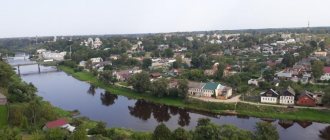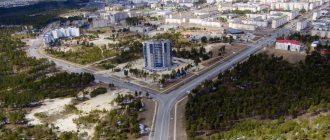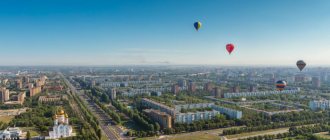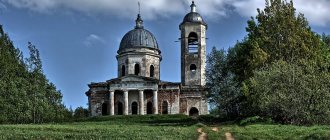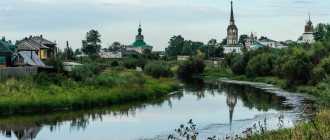People often ask the question: what federal district is Omsk? Or they ask differently. What federal district is Omsk? But in fact, Omsk is one of the cities in the Siberian part of Russia. It is located on the West Siberian Plain, as part of the Siberian Federal District. Omsk is one of the largest cities in Russia and Siberia. It is the administrative center of the Omsk region. It ranks eighth in the country in terms of population. The area of this city is 567 square meters. km. In total, it includes 5 administrative districts. The size of the city is about 40 km. Population: 1,166,092 people. The population density is 2.05 thousand people/km2. Which federal district does Omsk belong to? Now Omsk is part of the Siberian Federal District.
The famous Trans-Siberian railway passes through Omsk.
Current data
The population as of 2021 is 1,154,507. Moreover, according to statistics, up to 60 percent of all residents of the Omsk region live in the city.
In addition, compared to previous years, the birth rate in Omsk has increased significantly, and the death rate has decreased. Previously, the main reason for the increase was considered to be migration of residents of the CIS countries. This is true for now, but soon, if the birth rate continues to rise, natural increase will prevail.
Holidays in Omsk
As in many other Russian cities, recently the number of places available for recreation has been steadily declining. This is due to the compaction of buildings and the cutting down of trees. Despite the existing ban on swimming in rivers, there are several beaches in the city. From the point of view of nature, the Bird Harbor Park is of greatest interest, where natural reservoirs and wetland vegetation with wildlife have been preserved.
Thus, the answer to the question of which federal district and region of Russia is Omsk was given at the beginning of the article.
Statistics by year
Population growth is constantly rising and falling. At the same time, since 1979, it has never lost its status as a million-plus city. As of 2021, Omsk was in 8th place out of 1115 in terms of the number of people living on its territory. City population statistics by year (since 2010):
- 2010 – 1,154,116 people.
- 2011 – 1,154,121 hours
- 2012 – 1,156,583 hours
- 2013 – 1,160,670 hours
- 2014 – 1,166,092 hours.
- 2015 – 1,173,854 hours
- 2016 – 1,178,079 hours
- 2017 – 1,178,391 hours
- 2018 – 1,172,070 hours
- 2019 – 1,164,815 hours
- 2020 – 1,154,507 hours
Economy and industry
Omsk is an industrial center, one of the largest in the country. It is in 5th place on this list. The city's enterprises specialize in petrochemistry, chemistry, oil refining and strategic engineering. There are many food and light industry enterprises.
There are 27 hotels and 8 hostels in the city. The prevailing trend is towards the construction of small hotels and hostels. The most prestigious is the Berezovaya 2 hotel, popularly referred to as the state dacha on Berezovaya. In terms of quality of services, it corresponds to a five-star level. Another 3 have official three-star status. The status of the rest is even lower. Many hotel construction projects were never implemented.
About the city
For the first time, the Tara governor, Prince Shakhovsky, spoke about building a settlement on the Omi River in 1627. This was due to the fact that the Oirats, a nomadic people living in the southeastern part of Russia, were increasingly improving trade relations with Russia. In addition, further to the east was the Dzungar Khanate, which constantly raided Russian lands. A big blow fell on the volosts of the Tara district. Also, the existing trade route used to transport salt was inconvenient for most traders, since it did not have any transshipment points.
Then, in 1627, Shakhovsky proposed to the Tsar to build a fort on the Om River. He had to solve all the problems listed above. The Cossack leader Nazariy Zhadovsky checked the place where the fort was to be built and found it suitable. The following year, 1628, a new person was appointed to the post of Tara governor - Kaisarov. He also turned to the king with a request to build a fort that would help travelers overcome the Irtysh.
When Peter the Great came to power, giving great preference to the conquest of Siberia, things moved from a dead point. More and more expeditions were sent to Siberia in order to look for deposits of gold and silver. One of the largest expeditions is that of Matvey Gagarin. He went to Siberia with the goal of finding gold mines and also building cities on the Irtysh River. Great importance was given to the first, since after the war with the Swedes Russia experienced economic difficulties.
In July 1715, the expedition set out on a campaign. In the same year, a few months later, the expedition reached the territory of the Oirats and built a fortress there. The locals didn't like it. They believed that the Russians had decided to seize their territories. As a result, the fortress was besieged, which lasted three months. Afterwards the Russians left, and the Oirats destroyed the fortress.
With those who survived the siege, Gagarin moved to the mouth of the Omi River, where he founded a new fortress. In a few years, a second fortress will be founded on the opposite bank of the river.
In the nineteenth century, by decree of the emperor, Omsk became the administrative center of the Akmola region and the West Siberian, and later the Steppe, General Government, which covered a large territory of Western Siberia and part of Kazakhstan.
Dostoevsky was imprisoned in prison for a period from 1850 to 1854. This makes a strong impression on him, which the writer described in the book “Notes from the House of the Dead.” Since Dostoevsky was serving his prison term in Omsk, they decided to name a state university after him in the twenty-first century.
Geography and natural conditions.
Also on topic:
RUSSIA (RUSSIAN FEDERATION, RF)
Omsk is located in the Omsk Irtysh region, which is a relatively flat surface with prevailing altitudes of 100–140 m above sea level. The monotonous relief in some areas is disturbed by depressions of flat depressions, ancient runoff hollows, lake basins, ridges and ridges .
The flatness of the territory is due to the peculiarities of the geological structure of the West Siberian Plain, at the base of which, at depths from several hundred meters to four kilometers or more, lies a foundation composed of ancient igneous (granites, diabases) and overlying metamorphic (gneisses, schists) strata, crushed into folds and broken into blocks by tectonic faults.
The climate of Omsk is continental, much more severe than in other places corresponding to its latitude. The average temperature of the warmest month, July, is +17° C, the coldest month, January, is about –20° C. However, in terms of the number of hours of sunshine, Omsk surpasses not only Moscow, Sverdlovsk, but also Batumi, Kharkov, second only to Yalta and Krasnodar. The average day length in June in Crimea is 15.5 hours, and in Omsk - 17.2 hours. The predominant wind direction in winter is south-west, in summer - north-west. The highest wind speeds are observed in winter and spring, which causes frequent snowstorms and dust storms.
Ethnic composition
According to the 2021 census, up to 102 nationalities live in Omsk. Russians predominate (88.8 percent). Next come the Kazakhs (3.4 percent), Ukrainians (2 percent), Tatars (1.9 percent) and Germans (1.3 percent).
Previously, Russians were also the predominant nationality in the city. According to the 1959 census, about 77.43 percent of the total number of living people lived in Omsk (1,645,017 people). Every year the Russian population in the city grew more and more and at the moment there are 88.8 percent of the total number in the city (1,926,665 people).
Transport of Omsk
There are various types of public transport in the city. River transport has a long history and is represented by a river station and a cargo river port.
There are 2 railway stations in the city: “Omsk-Passenger” and “Omsk-Prigorodny”. There is a station square in front of them. Economically important is the passage of the Trans-Siberian Railway through Omsk.
Aviation transport is represented by Omsk-Central Airport. There is also a rather ancient Omsk-Severny airfield, which was previously used for civilian transport.
City transport is represented by all types: buses, trams, trolleybuses and minibuses. The number of bus routes is several times greater than trolleybus and tram routes.
Also, the federal highway “Irtysh” with code number P254 passes through the city.
Gender and age
The population is predominantly female (55 percent). Of the total number of residents, about 20 percent are over working age. According to statistics, the average age of a working Omsk citizen is 35.70 years. Average life expectancy:
- Women – 75.6 years.
- Men - 63 years old.
According to Rosstat data for 2021, there were 1,163 women per 1,000 men.
Culture.
The theatrical tradition in Omsk dates back to the private theater created in the Omsk fortress in 1764 by order of the commander of the Siberian Corps, Lieutenant General I. I. Springer. In the middle of the 19th century. amateur performances were staged in the Siberian Cadet Corps, and they were also held in the prison camp (F.M. Dostoevsky took part in the preparation of one of them).
Currently, there are 7 theaters in Omsk: Academic Drama Theater, Omsk State Puppet Theater, Omsk State Musical Theater, Omsk Theater for Children and Youth, Omsk State Chamber “Fifth Theater”, City Drama and Comedy Theater “Galerka”, Lyceum Theater and “Studio” by L. Ermolaeva. Omsk Academic Drama Theater, which is one of the most powerful theater groups in the country. During the Second World War, the theater named after Omsk, evacuated from Moscow, worked on the stage of the Omsk theater. E. Vakhtangov. The creative career of many popular actors began in Omsk: M. Ulyanov, S. Mishulin, V. Dvorzhetsky; The stars of today's TV series, Yu. Kuznetsov and N. Chindyaykin, worked in the theater for many years, and S. Chonishvili began his acting career.
In 1983, a hall of organ and chamber music was opened in Omsk. It contained an organ made in Czechoslovakia and considered one of the best in Russia. All the leading organists of the country played on it, concerts were given by such artists as organist Harry Grotberg, Oleg Yanchenko, soloists Dmitry Hvorostovsky, etc. In 1990, the building of St. Nicholas Cossack Cathedral, which housed the organ, was transferred to the diocese and in 1998 the organ was The reconstructed building of the Khudozhestvenny cinema was moved. A new organ hall was opened there in 2002.
In Omsk today there are 6 state and more than 20 departmental museums. One of the oldest and largest in Siberia is the Omsk State Museum of History and Local Lore, founded in 1878 as the museum of the West Siberian department of the Imperial Russian Geographical Society. At its origins were such outstanding scientists as M.V. Pevtsov, I.F. Bobkov, I.Ya. Slovtsov, G.E. Katanaev, G.N. Potanin, N.M. Yadrintsev and others. It contains materials from numerous scientific expeditions, collections brought from China, central Asia and India, collections of butterflies, stuffed animals, minerals, objects from archaeological excavations, rare exhibits from the history of the region, its nature and culture (clothing, household utensils, collections of early printed books, memorabilia medals, gold and silver coins). Among the unique exhibits is the banner of the Siberian Cossack Army of 1690.
In 1856, M.A. Vrubel was born in Omsk. The regional museum of fine arts, the largest art collection in Siberia, is named after him. It houses collections of foreign and Russian art from antiquity to the present day. Works of outstanding Russians (I. Repin, V. Serov, M. Shishkin, V. Surikov, I. Levitan, V. Vasnetsov, M. Vrubel, N. Goncharova, M. Larionov, V. Kandinsky, A. Yavlensky, representatives of the association “Jack of Diamonds”, etc.) and Western European artists, sculpture, original graphics, engravings, palace furniture, porcelain, glass, rare printed publications. In terms of the number of art galleries, Omsk is a leader among cities in the Asian part of Russia. Among the Omsk galleries: the exhibition hall of the Omsk Union of Artists; gallery-studio “Golden Path”, which operates in the foyer of the Chamber Stage named after. T. Ozhigova of the Omsk Academic Theater; "The World of Painting"; exhibition and sales galleries “Yes-Yes” and “Square”; gallery "Staircase", "D'Art", "Two ELs", "Przhevalsky's Horse", salon - exhibition "Christo". There is also a Literary Museum named after. F.M. Dostoevsky, Museum of Military Glory of Omsk and others. In 1991, the only state museum in Russia focused on local culture was opened - the Art of Omsk Museum, which collects and stores works of art of different genres and styles created by local artists.
Natural movement
As was written above, recently there has been an increase in the birth rate and a decrease in mortality. However, a natural population decline is still visible. For 2021, the natural decline amounted to 5 thousand people. Experts believe that even with the most optimistic forecast, the population will fall below a million.
In 2015, 16,392 babies were born in the city, which is a record for Omsk. However, in 2021 this figure dropped to 15,982. But, as stated above, mortality still exceeds birth rate. According to forecasts, natural growth, in the most optimistic scenario, will be visible only after about 20 years.
In addition, a high mortality rate among men of working age was observed in the region. According to Rosstat, this is 80 percent of the entire male working population. In women, this figure at the same age is four times lower.
However, the mortality rate of newborns in Omsk is one of the lowest in the entire country (4.7 per 1000 people, compared to 8.5 per 1000 throughout Russia). In addition, this figure is getting lower every year.
Also living in the city is one of Russia’s longest-living women. She celebrated her 108th birthday in 2021.
Ecological situation
Until 2011, Omsk was considered one of the most polluted cities in the country. However, in recent years the environmental situation has improved. The reason for the improvement was the modernization and slowdown of city enterprises. However, the problem of transport pollution persists. The problem of landfills, which affect river pollution, also remains relevant. The waters of large rivers remain in an unsatisfactory ecological condition.
Migration
And although a year earlier migration was the only source of population growth, in 2021 everything has changed. The level of arrivals has decreased significantly, while the level of departures, on the contrary, has increased. According to Rosstat, there were 13,513 arrivals in 2021, and 16,327 departures. Of these:
- Within Russia: 11,715/13,633.
- Interregional migration: 4,616/6,534.
- Intraregional: 7,099/7,099.
- International: 1,798/2,688.
Thanks to these data, we can say for sure that in the near future the population of Omsk will definitely not grow due to the influx of migrants, since they, for the most part, leave the region. According to surveys, most of the migrants came to work. The rest are mostly just tourists or exchange students.
Data for the Omsk region
The maximum increase in migration was noted in 2015, when 5.2 thousand people left the city and 12.6 thousand arrived. Then the level of migration gradually fell and reached the value that can be observed now.
General characteristics.
The economy of Omsk is based on the natural resources of the region - numerous deposits of various types of clays and loams, construction sands, peat and marls. Sapropel is found in a number of lakes. In the depths of the region there are deposits of oil and gas, iron ore, zircon-ilmenite placers and groundwater. There are several aquifers that are a source of water supply. Groundwater is widely used for medicinal purposes. The undoubted advantages of Omsk are its convenient geographical location, the presence of qualified personnel, a developed system of market institutions, political stability, active participation in the economic, scientific and cultural life of Russia.
The average number of employees at large and medium-sized enterprises and organizations in Omsk was estimated in June 2004 at 342.5 thousand people, the average monthly accrued wages in nominal terms was 7,090 rubles. The number of officially registered unemployed people was 2,719 people.
Forecast
In general, looking at the statistics of past years, we can make the assumption that Omsk will soon experience a natural increase in population. However, it is too early to talk about this now. Experts, however, are pessimistic. According to their forecasts, even if the level of migration and birth rate rises, Omsk will still lose its million-plus status.
However, one thing is known for sure - the mortality rate among Omsk residents is falling, and the birth rate is increasing. In addition, infant mortality is falling. However, there can be no talk of any population growth in the next few years. Now the city still retains its million-plus status only thanks to migrants, whose flow is also decreasing every year.
No one can determine exactly what will happen in the future, so all that remains is to build theories. However, it is worth recognizing that most experts have a positive attitude towards the population of the Omsk region and claim that there will be growth, but not immediately.
Planning and architecture.
Some important historical and architectural monuments have been preserved from pre-revolutionary Omsk. Its oldest building is the guardhouse building built in 1781–1783 (Partizanskaya St., 14), which currently houses the regional military registration and enlistment office. The oldest buildings in Omsk include the Tobolsk Gate (on the Tukhachevsky embankment), the only one of the four gates that led to the Omsk fortress. Through them, convicts went to work on timber rafting. Was among the prisoners in the 19th century. and the great Russian writer F. Dostoevsky. Another gate - Tara - was restored in 1991 on the old foundation.
The house of the commandant of the Omsk fortress, where Dostoevsky visited (now a literary museum), has been preserved.
In the historical center of the city there is the building of the former Governor General's Palace, the construction of which was carried out under the leadership of the architect F.F. Wagner and engineer K.E. Lazarev and was completed in 1862. The walls of the building, in front of which one of the first gardens in the city was laid out, witnessed the most important events that took place in Omsk in the second half of the 19th and early 20th centuries. They remember outstanding statesmen, world-famous travelers and explorers of Siberia, and cultural figures. The building housed the Governors General of Omsk and the Steppe Territory, successively housing the Council in 1917, the West Siberian Commissariat and the Provisional Siberian Government in 1918, the government of Admiral Kolchak in 1918–1919 and, finally, the headquarters of the 5th Red Army under the command of M.N. Tukhachevsky , which occupied Omsk in November 1919. In April 1925 it was transferred to the West Siberian Regional Museum. The palace has largely retained its original architectural appearance. Since 1985 it has housed the Museum of Fine Arts. M. Vrubel.
An architectural monument built in the Siberian Baroque style is the building of the Omsk Academic Drama Theater, commissioned by the city authorities by the architect I.G. Khvorinov (1901–1905). It has become one of the calling cards of the city.
The building of the former cinema "Khudozhestvenny" (until 1930 - "Pallas Crystal") was built in 1916. In the late 1990s, it underwent a major reconstruction, and now it houses an organ hall.
Among other buildings of the pre-revolutionary period: the Legislative Assembly (1914–1917, architect V.A. Prusakov); a complex of commercial buildings, the so-called “Moscow Trading Rows”, built in 1905 by the architect O. Dessin by order of the largest Russian manufacturers Morozov, Ryabushinsky, Tsindel, Mamontov; St. Nicholas Cossack Cathedral (1833–1840), built according to the drawings of the famous Russian architect V.P. Stasov. 28 residential buildings in Omsk with original carved platbands, cornices, pediments and entrance porches are registered as monuments of wooden architecture. It was decided to preserve individual details (platbands, cornices, entrance doors, entrance porch brackets) of 26 houses.
In the years after World War II, Omsk significantly changed its former appearance. Now it is defined by wide highways, landscaped embankments, powerful arcs of bridges connecting the banks of the Irtysh and Om, tall tower houses, and large industrial complexes. Among the monuments of the 20th century: the Palace of Culture of Oil Workers (1960–1962, architect M.A. Miskevich, G.G. Protopopov), River Station (1961–1963, architect S.A. Mikhailov, T.P. Sadovsky and others. ); Cinema and Concert Hall (architect A.M. Karimov, A.I. Yumakaev), Theater for Young Spectators (architect V.N. Belousov; both - 1965–1967, Musical Theater, built in 1981. Its original architectural solution was proposed by a group of architects including D.E. Lurie, N.N. Stuzhin, N.N. Belousova, engineers V.A. Visloguzov and Yu.I. Fridman. Noteworthy is the construction of the Shopping Center, erected at the intersection of two main highways of the city, on the site of the old market ( in 1986, its authors, designers and constructors, as well as the builder P. Kucher, were awarded the State Prize of the RSFSR).In 1995, the city's first color-musical fountain was opened on Teatralnaya Square. Also interesting is the building of the State Scientific Library named after A.S. Pushkin with a 14-story book depository. The façade is decorated with figures of Russian enlighteners and reliefs. History of culture
(author sculptor V.A. Trokhimchuk). The building was designed by a large creative team consisting of G.N. Naritsyna, T.L. Moroz, Yu.A. Zakharov and engineer I.N. Lyubich.
Until 1973, the development of Omsk was concentrated on the right bank of the Irtysh. One of the objectives of the 1970 master plan was the construction of residential and industrial buildings on the left bank. Now Left Bank is one of the vast residential areas. It was conceived as an environmentally friendly zone, free from industrial enterprises. Active construction continues here today, but the standard panel houses of the 1970s and 1980s are being replaced by luxury houses. On the left bank there are two large hospital complexes - an emergency hospital and a multidisciplinary clinical hospital. Already in the 21st century. the Church of the Nativity of Christ was built on the Left Bank (architect A. Slinkin).
